Polish manufacturer Pylon Audio has only been around for just over a decade, but they’ve really had the pedal to the metal, releasing nearly nine different speaker series in that time. These series comprise everything from centre speakers and bookshelf speakers to column speakers. There are also vintage-style loudspeakers, the Jade 20, which can stand on the floor or on low stands. In short, this audio brand has a lot to offer. Pylon’s philosophy is based on the pursuit of precision through music reproduction that excites the senses.
The reputation of Pylon’s Diamond series gives the Diamond 25 a head start. In terms of size, it offers the perfect compromise, being neither too big nor too small. It’s a great product for those looking to get started with this type of speaker and is the smallest in the Diamond series. There are also the 28 and 30 models, which are more imposing column speakers (the Diamond 30 even comes with an extra speaker). These are complemented by the Diamond Center as well as bookshelf speakers (Diamond 15 and 18).
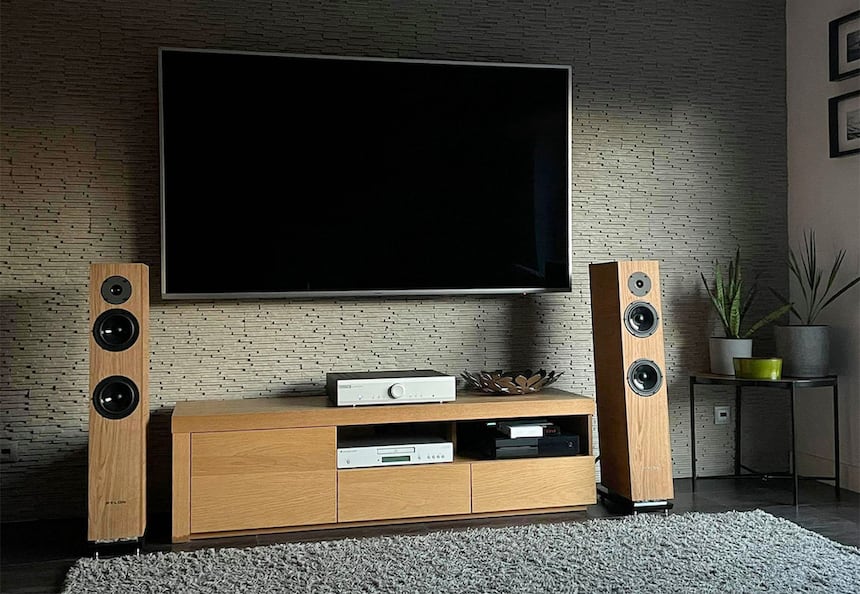
© Pylon Audio
Specifications
● Column speakers
● Price: 2,089 € a paire
● Speakers: 1x 19mmtweeters, 2x 15cm woofers
● Power Handling: 200 watts
● Bandwidth: 40 – 20.000 Hz
● Impedance: 4 ohms
● Connectivity: single speaker terminal
● Dimensions (l x h x d): 165 x 942 x 290 mm
● Weight: 19 kg each
Overview of the Diamond 25
This is a pair of speakers with a top-notch finish. With a dark oak veneer, they’re protected by a neutral oil that gives the wood a natural feel. Other finishes are also available, always with an oak veneer, just with different shades of oil. You can also opt for a varnish, available in wenge, walnut or cherry, for example. White and black are available in both matte and gloss finishes. What’s more, thanks to Pylon’s customisation options, you can also choose from any colour from the RAL colour chart in either a matte or gloss finish. What more could you ask for?
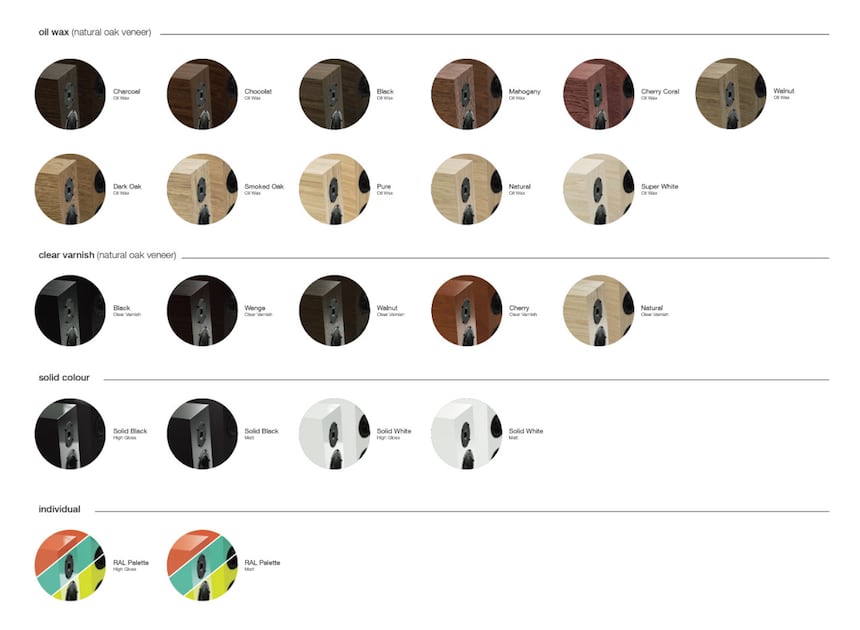
The speaker rests on a built-in stand consisting of two parts. The first part, with a smaller footprint than the speaker itself, features a beautiful, mirrored finish. The lower part is covered with matte black paint. Both parts are about 5 cm thick, so the stand has very little impact on the overall height of the speaker whilst still adding a premium touch. The brand’s silver logo also appears on the front of each speaker at the bottom.
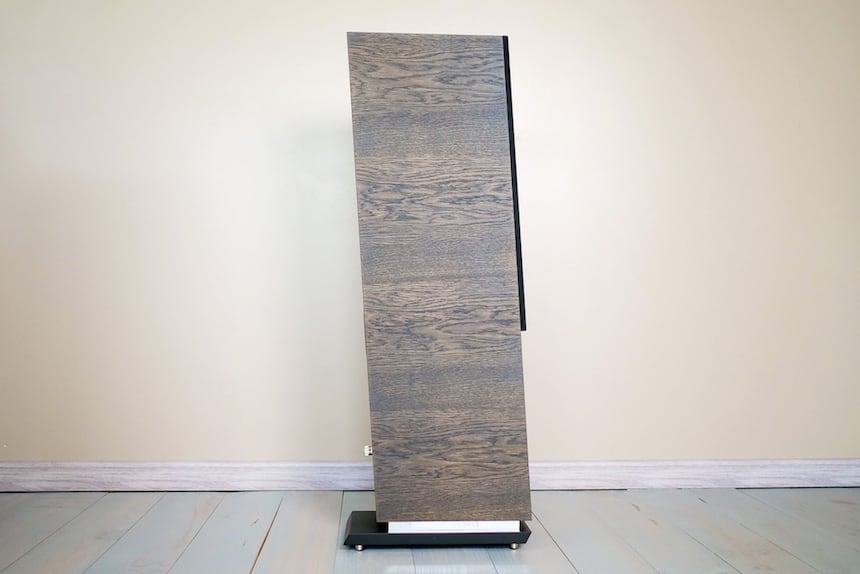
The front and rear panels are parallel but slightly oriented towards the ceiling. On small column speakers, this is a tried and tested solution for directing sound towards the listening position. The Diamond 25 contains three speakers: a tweeter and two woofers—and Pylon has used the best in the field.
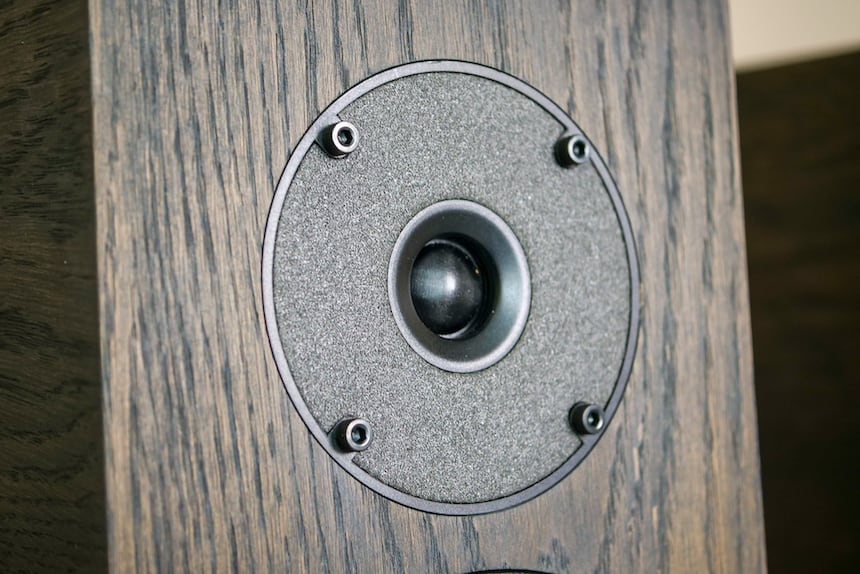
The 19 mm fabric dome tweeter comes from ScanSpeak. Quite imposing, it includes its own damped resonance chamber, allowing it to reach lower frequencies and connect more seamlessly with the woofer.
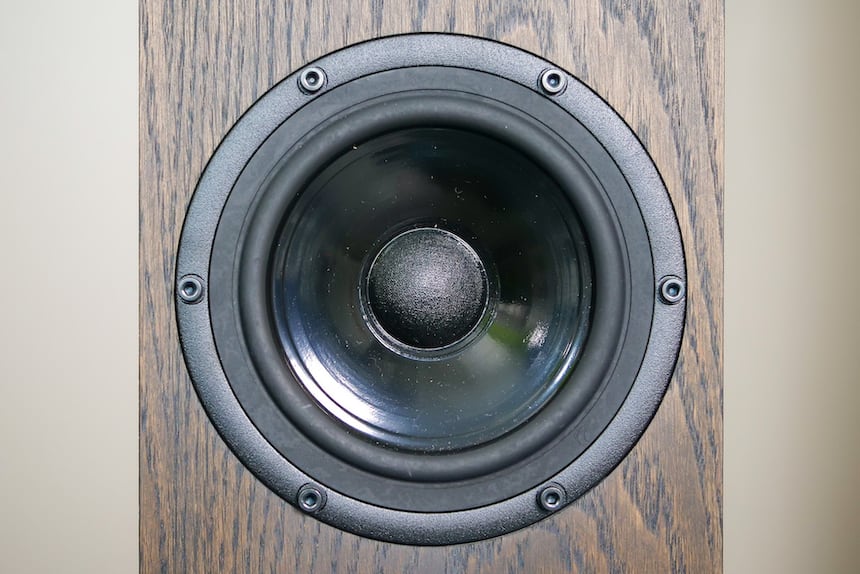
The midrange/bass is reproduced by two woofers, this time from SEAS. With a diameter of 15 cm, this double woofer is composed of a coated paper cone and a generous motor. With a linear bandwidth and a very low resonance frequency, it’s a speaker that excels in the reproduction of low bass and midrange frequencies.
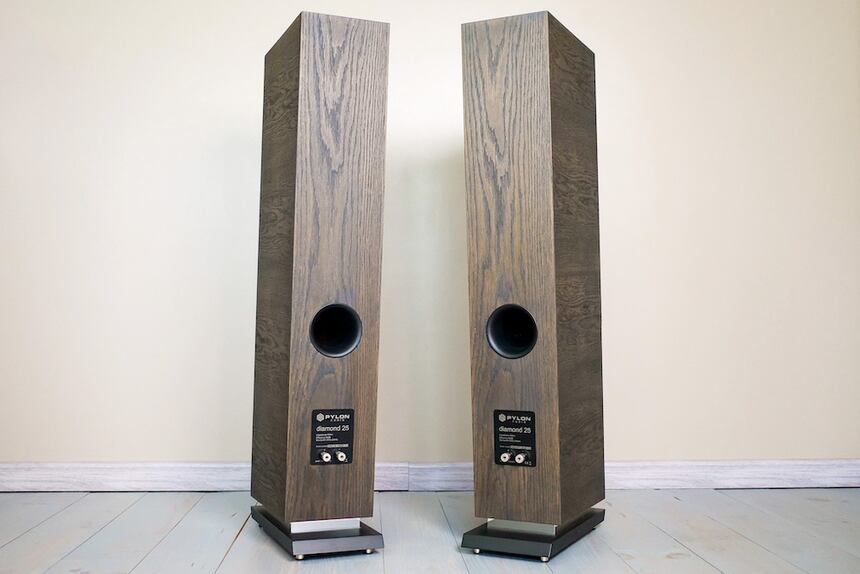
Pylon has combined these speakers with a bass reflex port on the rear panel. The three speakers are protected by a magnetic cover that is the same width as the speakers and covers about half the front panel.
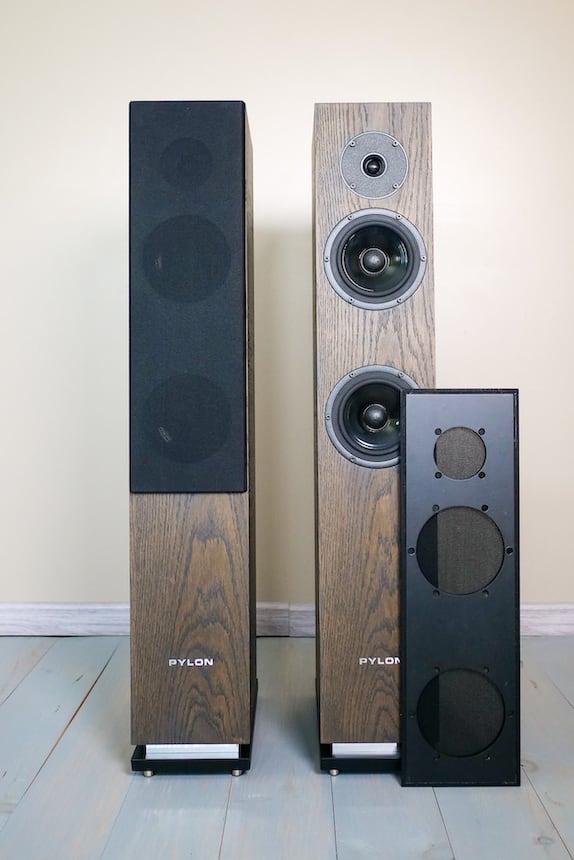
Using the Diamond 25
The Diamond 25-column speakers are the smallest in their series. Their minimal footprint and classic height make them ideal for any room, even smaller ones, since they don’t require lots of space. You can place the base directly onto the floor. However, there are four screw threads that allow you to add four feet, each 2 cm in diameter. With or without the feet, these two solutions are more suitable for hard floors such as wood or tile.
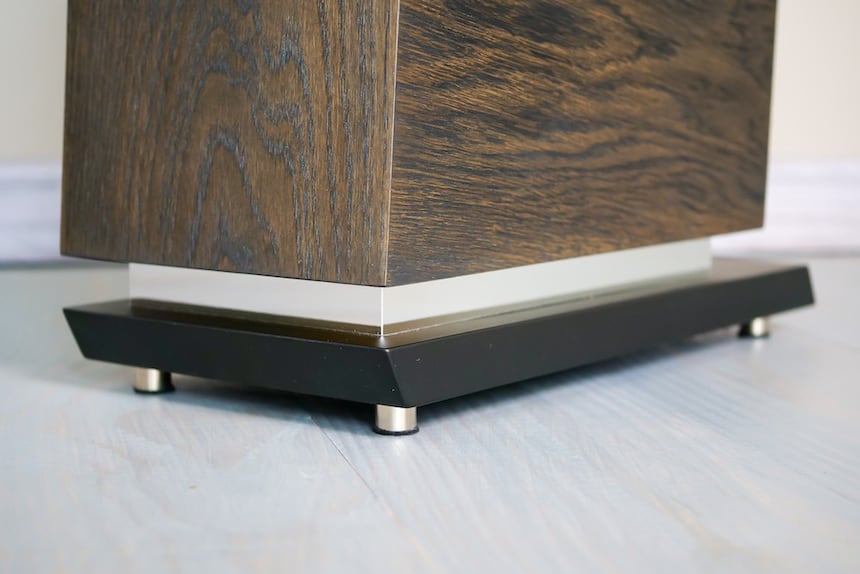
The feet allow the speaker to be better decoupled, but most importantly, they adjust its stability. As the columns are quite light, there’s a risk that they could tip over. We would have liked to have seen some spikes that would have been better adapted to a set-up on a carpet or rug. However, the standard screw thread means you can purchase these later if you find yourself in this situation.
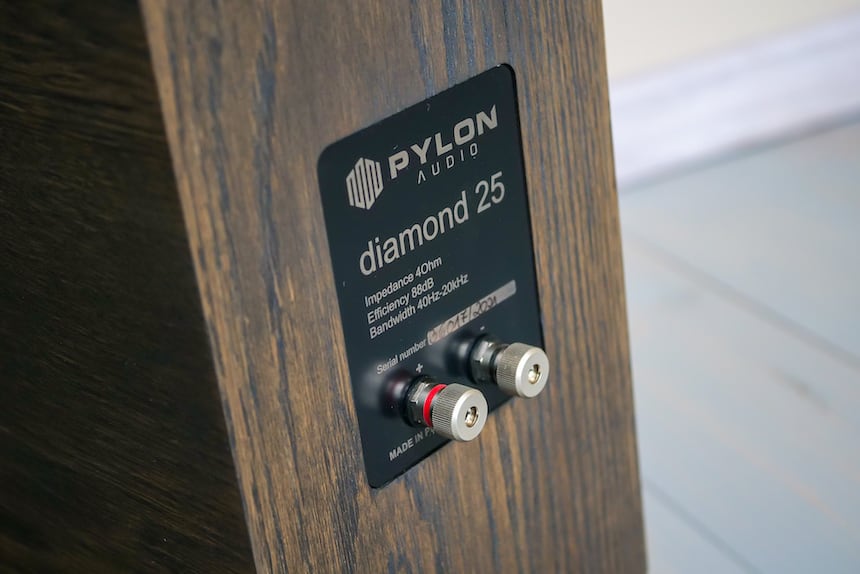
The Diamond 25 speakers are equipped with a simple terminal strip, so no bi-wiring or bi-amping is possible. It’s composed of quality terminals that accept all types of cables and their connectors. The impedance is 4 ohms. This is something to consider, although it’s no longer a problem with most modern amplifiers. Be sure to check your device’s capabilities in this regard; you never know. Pylon recommends 100 Watts of amplification, and the Diamond 25s accept up to 200 Watts. This leaves a lot of room for combination.
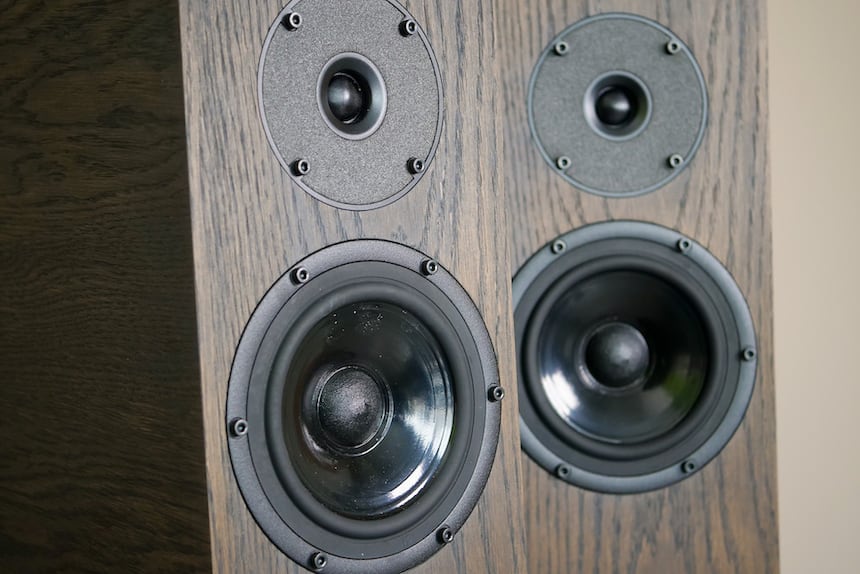
Pylon claims a bandwidth starting at 40 Hz and ending at 20 kHz. These figures are consistent with this speaker format and with the on-board drivers. The internal volume of the column allows the woofers to work optimally to cover the first octaves. Since the Diamond 25s feature a bass reflex port, they shouldn’t be placed too close to the rear wall. This way, the speaker will be able to breathe and deliver a drier bass, creating a more open soundstage. That's what we’re expecting anyway; all that’s left to do now is check!
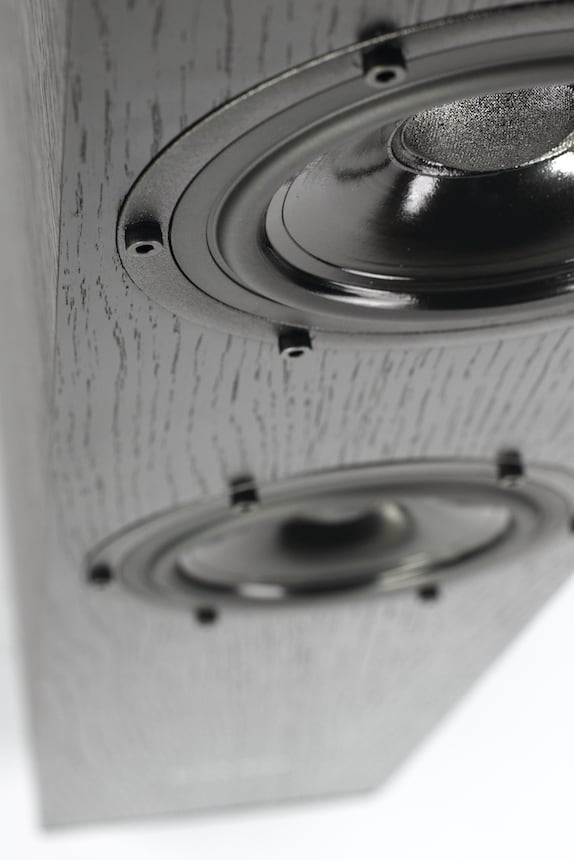
Listening Expereince
We set up the Diamond 25s in the usual place: well away from the rear wall and about 80 cm from the side walls to create an equilateral triangle with the listening position. We placed them on the floor with their decoupling feet attached. They were amplified by an Elac DPA-2 capable of delivering a maximum of 2 x 325 Watts under 4 ohms (class D). Playback was done by Qobuz on Roon via a Mytek Brooklyn.
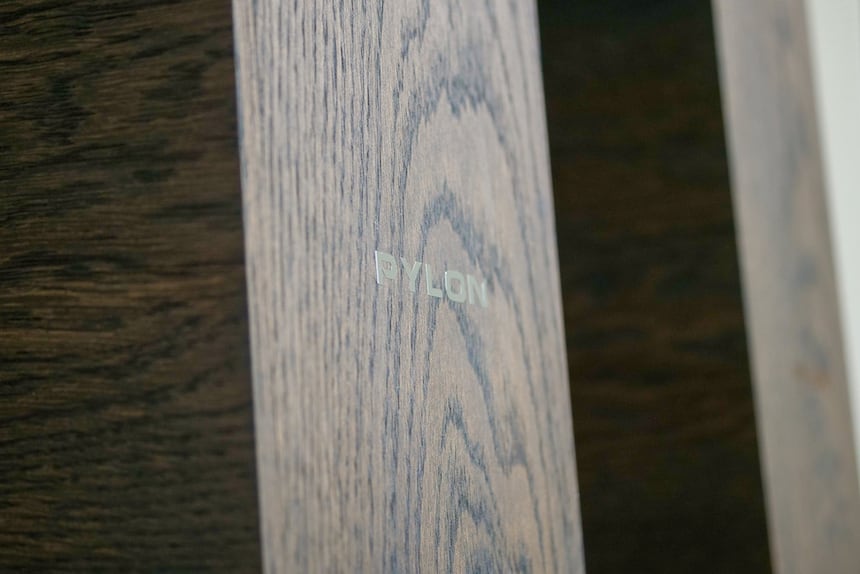
The Diamond 25s have a solid-sounding lower range. They don’t embellish older recordings where this part of the spectrum wouldn’t be to their advantage. On the other hand, listening to the modern R&B of Little Simz on her latest album, No Thank You, we hear the tension and punch that contribute to the overall solidity of the music. On even more demanding tracks, such as those by French rapper Mou on his album Nirvanana, the D25s are capable of delivering an impressive low bass without distorting or creating unpleasant reverberations. They easily provide ample bandwidth for use in small rooms or flats, going further than a pair of bookshelf speakers.
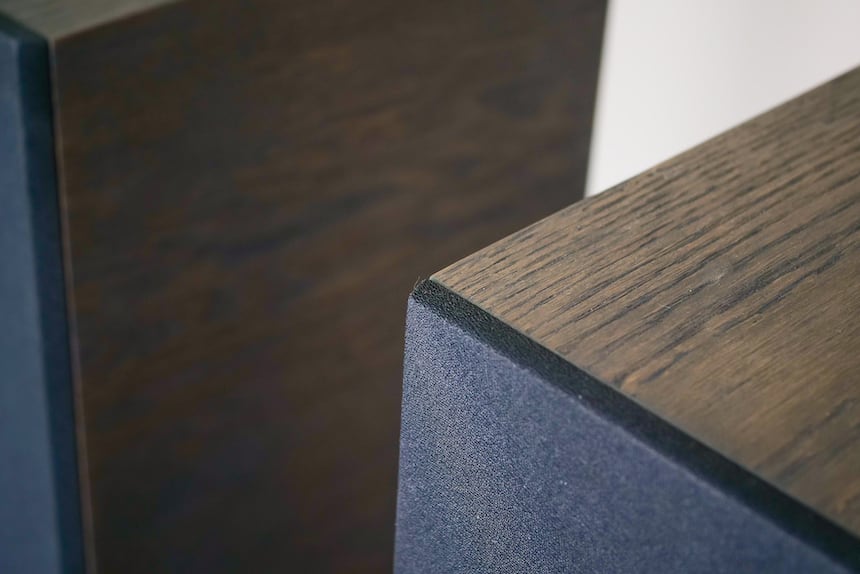
The Diamond 25’s soundstage boasts a realistic depth effect on Carl Nielsen's Symphonie No. 3 played by the Danish National Symphony Orchestra. The different sections of the orchestra extend behind the speakers (though, of course, you’ll need to position them a good metre away from the rear wall to achieve this depth effect). If you close your eyes, you can effortlessly distinguish the placement of each section with brilliant verticality. The Pylons also know how to differentiate between calm and dynamic passages without ever compressing or flattening out the whole. They do exactly what’s expected of them. If you’re looking for more airiness and detail in the instruments, you'll have to go up in range and budget.
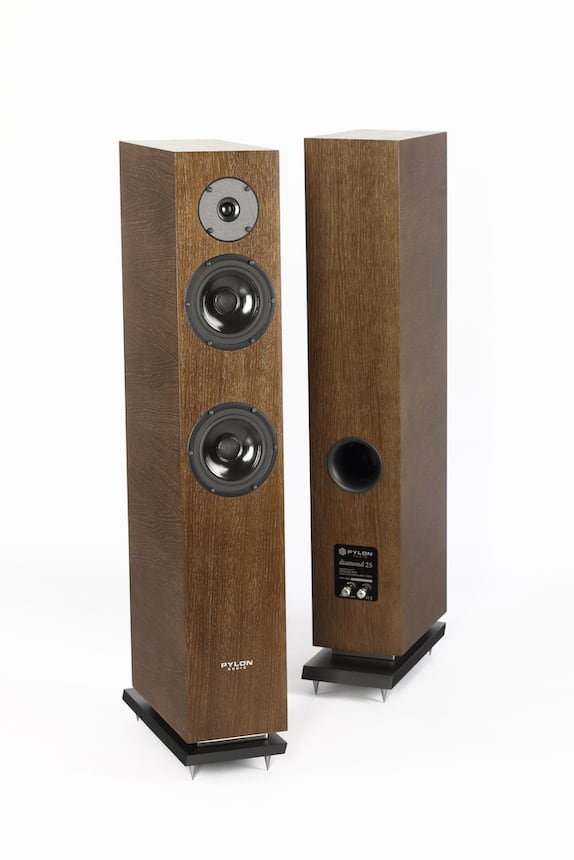
The Diamond 25s deliver pleasant vocals with a good presence without ever producing an aggressive sound. However, if you’re looking for unrestrained higher frequencies, you’ll have to look elsewhere. There’s a certain restraint in the midrange that almost seems to result in a slight haze that can obscure the details of female vocals or piano notes at reasonable sound levels—something we were able to verify on Lisa Simone’s album All Is Well. It’s up to you to decide how you feel about this characteristic of these speakers. The Diamond 25s don’t stimulate the ear for nothing, providing many hours of relaxing listening.
Pros:
- A large bandwidth
- A deep soundstage
- Easy to set-up
- Available in a range of finishes
- Good value for money
Cons:
- The midrange is a bit closed in on itself
- Stability needs to be properly adjusted
Conclusion
The Pylon Diamond 25 are small column speakers that are close to perfection in their class. They have almost everything going for them. We found fault with the midrange, which lacks neutrality and breathing space, but apart from this specificity in its sound signature, the bandwidth is wide with a very present bass. An excellent compromise, the Diamond 25s are perfect for use in small rooms and flats, allowing you to enjoy a powerful lower range without disturbing the neighbours. By connecting them to an amplifier with a good power reserve, you’ll really get the best out of them. As for the impeccable finish, never before have we seen a manufacturer offer so many types of wood—not to mention the fact you can choose from a whole array of colours!